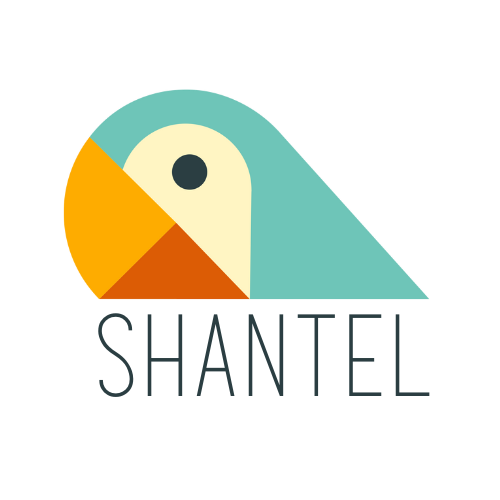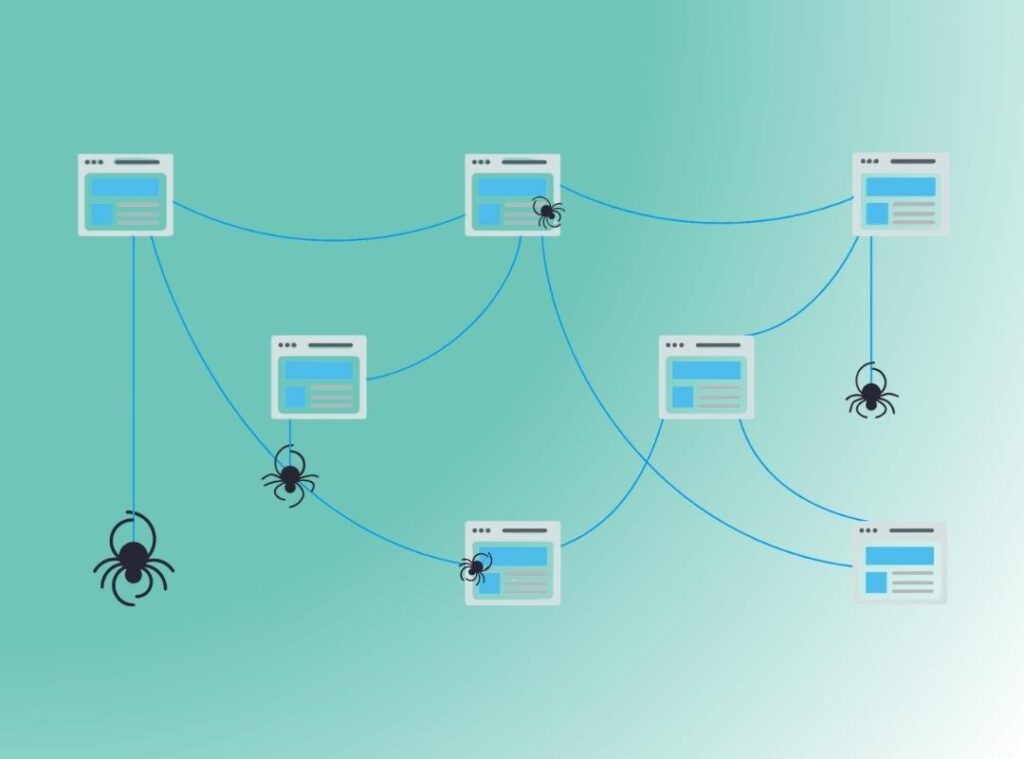Welcome to another exploration into the world of digital marketing. Today, we’re peeling back the layers of a fundamental concept that powers the vast information superhighway – Crawling and Indexing.
As part of the Shantel team, a group steeped in the digital marketing landscape, we’re here to walk you through these crucial processes that make or break online visibility.
The Backbone of Search Engines
Crawling is the first step in the essential trio of activities that search engines like Google perform to gather data and serve up relevant content to users.
Picture a spider – that’s exactly what search engines deploy, aptly named ‘web crawlers.’ These digital arachnids tirelessly traverse the web’s endless weave of pages.
What Web Crawlers Do
Web crawlers, also known as spiders or bots, are the Internet’s scouts. They begin their journey with a list of webpage URLs generated from previous crawl processes and sitemaps provided by websites.
As they visit these web pages, they use the links contained within to discover new pages to add to the ever-expanding inventory of the web.
How Crawling Works
The crawling mechanism is straightforward yet sophisticated. Spiders start with known URLs, visit these sites, identify all the hyperlinks on the page, and add them to the list of sites to visit next. This recursive process continues, creating a substantial map of the web’s expansive territories.
The Challenges of Web Crawling
Despite its systematic approach, crawling isn’t without its challenges. Websites change, new pages are created, others are deleted, and some are updated.
Crawlers must be nimble and intelligent, discerning which pages to revisit and how often to check for changes, ensuring the most up-to-date information is collected.
The Art of Organizing Information: Indexing
Once web crawlers have gathered information, the next crucial step is indexing. This is where search engines process and organize the data into a massive digital library – the index.
Much like a library’s card catalog, the index serves as a giant repository where all the information is stored for quick retrieval.
The Indexing Process
When a webpage is crawled, its content is processed and evaluated. Search engines look at key signals like keywords, site structure, and freshness of content to understand what the page is about.
This data is then added to the index, categorized, and stored in a way that makes it quick and easy to find.
Indexing Challenges
Indexing billions of web pages is a monumental task. It requires sophisticated algorithms to determine the relevancy and quality of content.
Search engines must also contend with duplicate content, spam, and changes to websites that can affect how or if a page is indexed.
Dealing With the Challenges: Shantel’s Approach
At Shantel, we don’t just acknowledge the challenges that come with crawling and indexing – we embrace them.
Our team employs cutting-edge strategies and tools to ensure that the websites we manage are crawler-friendly and primed for optimal indexing.
Ensuring Visibility in the Crawl
Our goal is to make each page scream ‘look at me’ to web crawlers. We streamline site architecture, create comprehensive sitemaps, and ensure that robots.txt files are crawler-friendly. This results in a smooth crawling process and means that no important page is left unnoticed.
Staying Ahead of the Curve
We constantly monitor and adapt to search engines’ evolving algorithms. By staying informed and agile, we ensure that the websites we manage adapt to changes quickly, maintaining their visibility and relevance in the search index.
Maximizing Indexation
It’s not enough for a page to be found; it must also be understood. Our company optimizes content with the right balance of keywords, meta tags, and structured data to clearly communicate the page’s intent to search engines, thereby improving its chances of being properly indexed.
Regular Audits for Consistent Indexing
We conduct regular audits to check for indexation issues. This proactive approach helps identify potential problems before they impact a site’s visibility in search results, ensuring that the content we curate remains at the forefront of search engine results pages.
Key Differences Between Crawling and Indexing
| Aspect | Crawling | Indexing |
| Purpose | To discover and visit web pages. | To organize and store information from pages. |
| Process | Automated bots visit pages and follow links. | Analyzing and categorizing page content. |
| Outcome | A list of URLs to potentially index. | A searchable index of web content. |
| Frequency | Continuously, but varies per page. | After crawling, as needed. |
| Challenges | Handling vast numbers, dynamic content. | Sorting, deduplicating, and updating entries. |
The Strategic Role of Crawling and Indexing in SEO
Search Engine Optimization (SEO) is not just about keywords and content; it’s deeply intertwined with how well a website is crawled and indexed. Experts at Shantel recognize the strategic role these processes play in boosting a site’s SEO potential.
The SEO Implications of Crawling
For a website to rank, it first needs to be discovered. That’s where SEO meets crawling. By ensuring a website is accessible and understandable to crawlers, SEO professionals at Shantel set the stage for successful indexing.
We ensure that every hyperlink serves a purpose and that the website’s navigation is intuitive, directly influencing the efficiency of crawling.
Enhancing SEO Through Effective Indexing
Once a website is crawled, it’s up to the indexing process to make sense of the content. Here, SEO takes on a nuanced role.
We optimize everything from title tags to image alt attributes, ensuring that the indexing process accurately reflects the website’s content. Proper indexing means that when a user searches for relevant terms, the search engine is more likely to return the website in the results.
The Technical Side of Crawling
Mastering the technical side of crawling is key to ensuring a website is thoroughly scouted by bots. At Shantel, we employ best practices that have been refined through years of experience.
Crafting a Crawler-Friendly Architecture
The structure of a website can facilitate or hinder a crawler’s ability to navigate it. A well-organized site with a clear hierarchy and text-based navigation is like rolling out the red carpet for web crawlers.
We design with a crawler’s perspective in mind, ensuring that the most important pages are easy to find and that any dynamic content is also accessible.
Leveraging Robots.txt and Sitemaps
Robots.txt files and sitemaps are the guiding lights for crawlers. The former tells bots which parts of the site to ignore, while the latter provides a roadmap to all the valuable content. Shantel crafts these with precision, ensuring that crawlers spend their time wisely on our sites.
Indexing in Detail: How Content is Cataloged
Going deeper into the specifics of indexing, we uncover how content is categorized and stored for quick retrieval during searches. This process is both an art and a science.
Indexing Algorithms and Content Analysis
Search engines use complex algorithms to analyze page content. They look at factors like keyword frequency, synonyms, and relevance to other pages. At Shantel, we ensure that our content is not just rich in quality but also structured in a way that aligns with these indexing algorithms.
The Role of Metadata in Indexing
Metadata, such as meta descriptions and title tags, plays a crucial role in indexing. They provide search engines with concise summaries of web pages.
Our team meticulously crafts metadata that not only catches the crawler’s eye but also aligns with user search intent, increasing the likelihood of a match in the index.
Real-World Impact of Crawling and Indexing
The real-world impact of crawling and indexing on businesses, users, and the internet ecosystem is profound. As a digital marketing company, Shantel is acutely aware of this impact and leverages it to our clients’ advantage.
Directing Traffic
Crawling and indexing directly affect a website’s visibility, which, in turn, influences traffic. A site that’s easily crawled and properly indexed is more likely to appear in search results, leading to more clicks and, ultimately, conversions. Shantel’s strategies are designed to position clients’ websites right in the path of their target audience.
Keeping Up with a Dynamic Digital Landscape
The digital landscape is in constant flux, with new content and technologies emerging at breakneck speed.
Crawling and indexing processes must adapt to these changes to remain effective. At Shantel, we’re always on the pulse of the latest trends, ensuring that the websites we handle are not just keeping up but leading the charge.
Measuring and Monitoring Crawling and Indexing
To truly harness the power of crawling and indexing, one must measure and monitor these processes. At Shantel, we use advanced tools and analytics to gauge performance and identify areas for improvement.
Analytics and Crawling Data
By analyzing server logs and crawler behavior, we gain insights into how search engines interact with websites. This data informs our SEO strategies, helping us to optimize for more effective crawls.
Indexing Metrics and Site Health
Indexing metrics give us a snapshot of a website’s presence in the search engine’s index. We track these metrics to ensure that our clients’ sites remain healthy and fully indexed, ready to be served up to users at a moment’s notice.
Closing Thoughts
Crawling and indexing are the lifeblood of the Internet’s search capabilities. Without these processes, the web would be a labyrinth with no map. At Shantel, we pride ourselves on mastering these intricate processes, guaranteeing that the digital solutions we provide are not just innovative but also in sync with the rhythm of the web’s vast information network.
Through our expertise, we ensure that the sites we work with are not just part of the web but stand out in the ever-competitive digital space. Join us in embracing the complexity and beauty of crawling and indexing, and let’s make the digital world more accessible together.
FAQs
Can a page be indexed without being crawled?
No, a page must first be crawled before it can be indexed. Crawling is the process by which search engines discover your webpage, and indexing is the next step, where the page is analyzed and stored in a database for retrieval. Without crawling, a search engine won’t know that the page exists.
How can I tell if a search engine has crawled my website?
You can check if your website has been crawled by using tools like Google Search Console. This service provides a report that shows which pages have been crawled and when. Additionally, you can check your server logs to see the access requests made by search engine bots.
What factors can prevent a web crawler from crawling a page?
Several factors can prevent a web crawler from crawling a page, including the use of a robots.txt file that disallows the crawling of certain pages, the presence of ‘nofollow’ tags on links, server errors, or pages requiring login credentials that restrict access.
Is there a way to prioritize which pages are indexed first?
Yes, you can influence the priority of indexing through your website’s sitemap by assigning priority levels to different pages. However, it’s ultimately up to the search engine’s indexing algorithms to decide the order of indexing.
How often do web crawlers revisit a webpage?
The frequency with which web crawlers revisit a webpage can vary widely. Factors that influence this include the page’s update frequency, its importance, the frequency of changes, and the crawler’s algorithm. Some pages are crawled multiple times a day, while others less frequently.
Can changes to my website affect its indexing status?
Absolutely. Significant changes to your website, such as altering the structure, content updates, or going through a site migration, can affect its indexing status. It’s crucial to monitor and adjust your SEO strategy after changes to ensure the website remains properly indexed.






